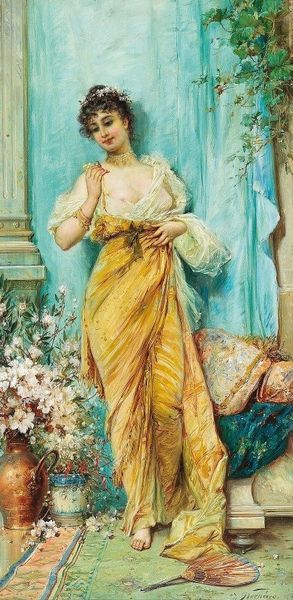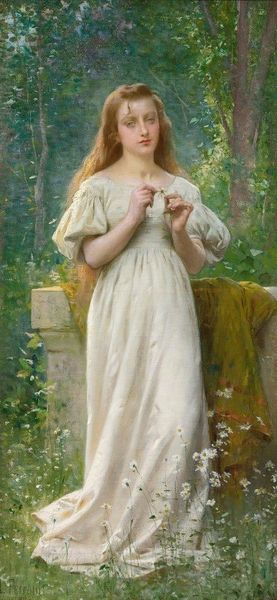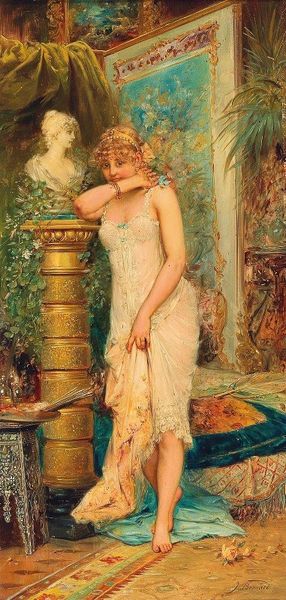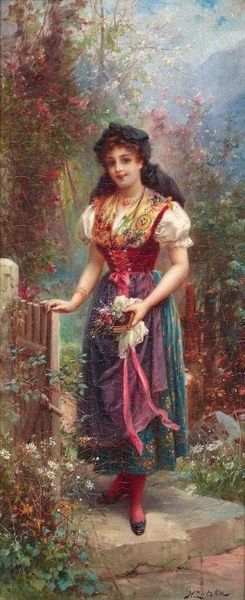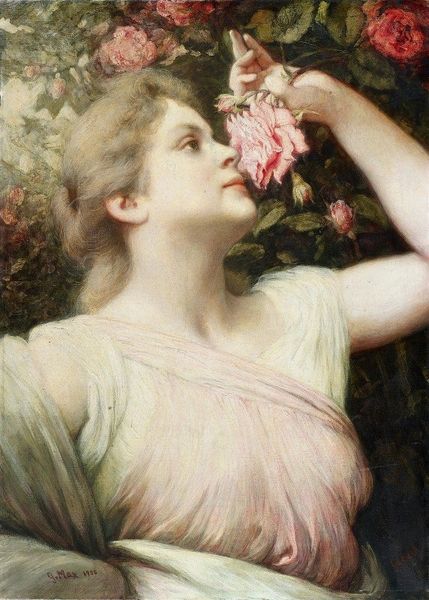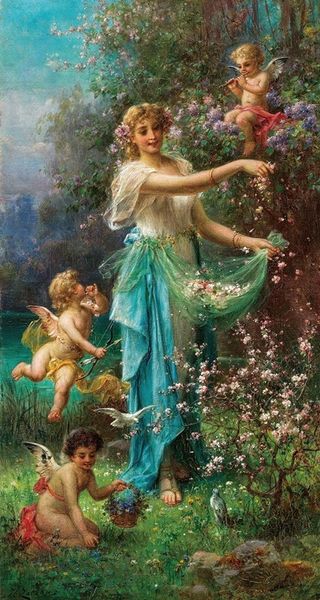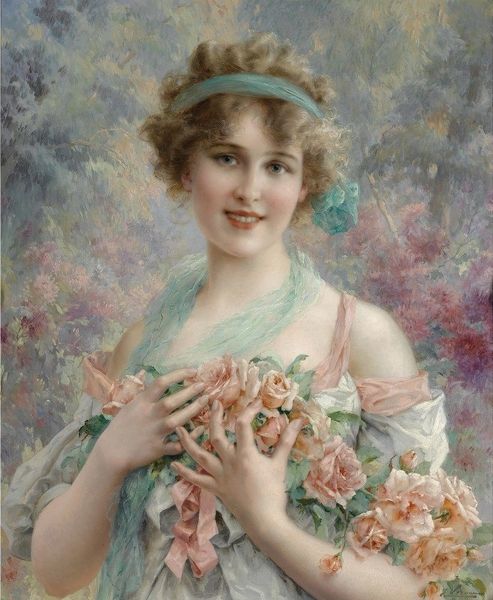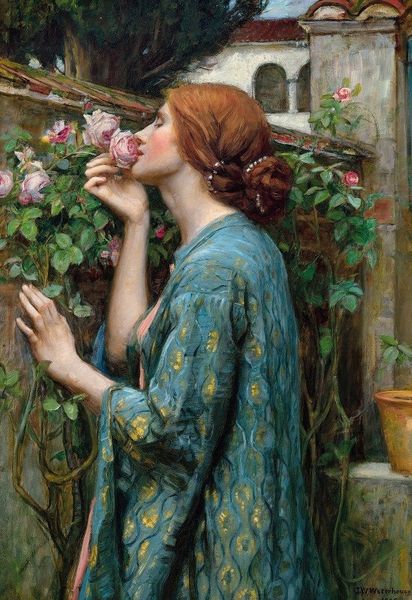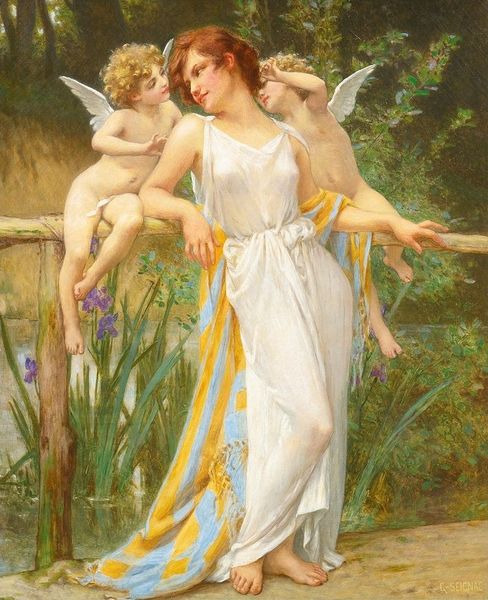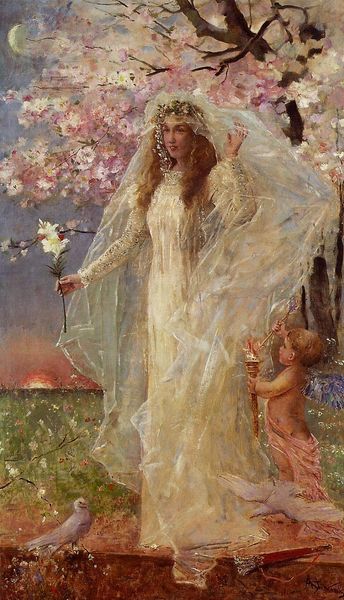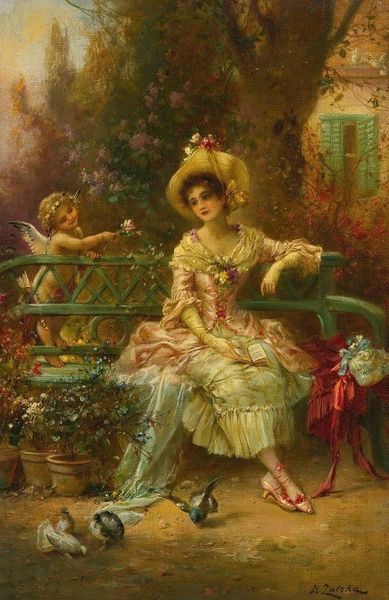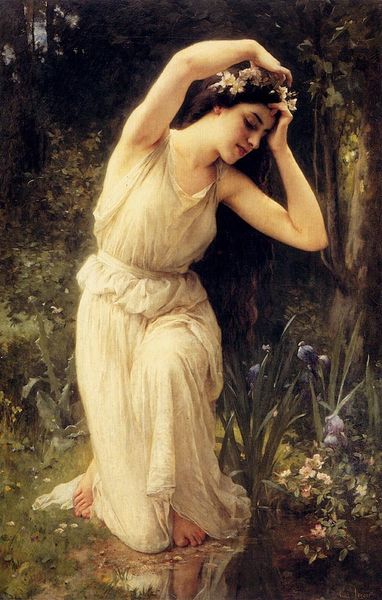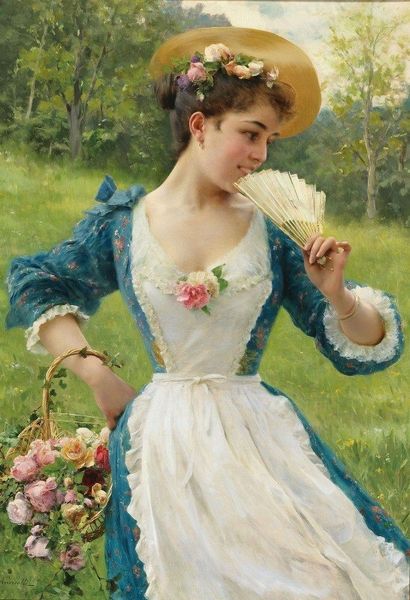
painting, oil-paint
#
fairy-painting
#
figurative
#
painting
#
oil-paint
#
landscape
#
figuration
#
oil painting
#
romanticism
#
genre-painting
#
academic-art
Copyright: Public Domain: Artvee
Curator: This piece is titled "Blumenreigen," a painting by Hans Zatzka. He's best known for these sort of whimsical, fairy-tale scenes. Editor: It certainly looks like it! I get a sugar rush just looking at it – so much delicate colour, that impossibly pretty woman. It reminds me of a porcelain figurine. Curator: Exactly, there is this artificial sweetness about it, and the technique Zatzka employs – with these hazy brushstrokes – only heightens that sense of unreality. It feels almost… manufactured. And the sheer quantity of flowers. Was it a commission do you think? Editor: Good point! Let’s consider the context. He produced so much work, his paintings are awash in symbolism, romanticized figuration, and idyllic genre scenes. I suspect these weren’t paintings for the avant-garde. Likely mass consumption was an important factor for the production of works like these. Oil paints aren't cheap; neither is canvas or the labor to produce these images, we’ve got to think about all those class relations embedded in its production! Curator: And consider the fairy-painting genre that is was clearly inspired by. Zatzka painted this to evoke escapism, so whether the person was buying the art or just gazing for a few moments, they were invited into an ethereal otherworld. He doesn’t challenge our notion of beauty; he reinforces it. Editor: Precisely! We can almost feel the Victorian-era expectations rippling through the image – this young, innocent-seeming woman floating in flowers… It’s interesting how that idyllic presentation naturalizes particular class positions in relation to feminine virtues. Curator: Right! Despite the saccharine exterior, there is a critical commentary we can draw out by examining it through our contemporary lens. By looking at the themes he presents and their social context, there is an avenue for exploration that makes the piece quite subversive in ways the original viewer may never have expected. Editor: It highlights how aesthetics can be instrumentalized and turned into products, while also speaking volumes about the aspirations and societal values of its time. It can’t be simply decorative if it has such interesting resonances when held up against the present.
Comments
No comments
Be the first to comment and join the conversation on the ultimate creative platform.
